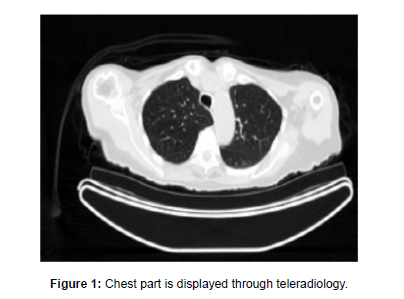Revolutionizing Pulmonology: Unleashing the Power of Teleradiology in Imaging
Received: 04-May-2023 / Manuscript No. roa-23-100633 / Editor assigned: 06-May-2023 / PreQC No. roa-23-100633 (PQ) / Reviewed: 20-May-2023 / QC No. roa-23-100633 / Revised: 24-May-2023 / Manuscript No. roa-23-100633 (R) / Published Date: 31-May-2023 DOI: 10.4172/2167-7964.1000450
Introduction
Advancements in medical technology have opened up new avenues for diagnosing and treating complex diseases. In the field of pulmonology, the ability to accurately assess lung conditions is crucial for effective patient management. Teleradiology, a branch of telemedicine, has emerged as a game-changer, transforming the way pulmonologists access and interpret medical images remotely. In this article, we delve into the realm of teleradiology in pulmonology and explore how this technology is revolutionizing the field.
The essence of teleradiology
In pulmonology, it plays a pivotal role in the assessment of lung diseases, including pneumonia, tuberculosis, lung cancer, and chronic obstructive pulmonary disease (COPD). By employing advanced imaging techniques, teleradiology provides pulmonologists with realtime access to high-quality images, fostering prompt and accurate diagnoses [1].
Overcoming geographical barriers
One of the primary advantages of teleradiology in pulmonology is its ability to bridge geographical gaps. This technology facilitates remote consultations, enabling pulmonologists to collaborate with experts across the globe. In regions with limited access to pulmonology specialists, teleradiology allows patients to receive expert opinions and access state-of-the-art medical imaging without the need for travel. The seamless transmission of images empowers pulmonologists to make timely and informed decisions, improving patient outcomes regardless of their location.
Enhanced collaboration and expertise
Through teleradiology, pulmonologists gain access to a vast network of specialized radiologists. This collaboration between pulmonologists and radiologists fosters multidisciplinary expertise, resulting in comprehensive patient care. By leveraging the knowledge and experience of radiologists, pulmonologists can obtain accurate interpretations of complex imaging studies, leading to improved diagnostic accuracy and optimal treatment planning [2].
Rapid diagnoses and treatment
Timely diagnosis is crucial in pulmonology, as it directly impacts patient prognosis. Teleradiology expedites the process by facilitating rapid image sharing and interpretation. Through the implementation of Picture Archiving and Communication Systems (PACS) and secure cloud-based platforms, medical images can be accessed and assessed within minutes. This rapid turnaround time enables pulmonologists to provide prompt diagnoses, initiate appropriate treatment plans and monitor disease progression effectively.
Quality control and second opinions
In pulmonology, teleradiology serves as a valuable tool for quality control and second opinions. The ability to transmit images securely enables pulmonologists to seek expert advice from renowned specialists, thereby reducing the chances of misinterpretation or misdiagnosis. This collaborative approach promotes a higher level of confidence in diagnostic accuracy, ultimately benefiting the patients (Figure 1).
Conclusion
Teleradiology has revolutionized pulmonology, enabling pulmonologists to overcome geographical barriers, access specialized expertise, and provide timely diagnoses and treatment plans. By harnessing the power of advanced imaging technology and telecommunication, teleradiology has elevated patient care, ensuring that individuals with pulmonary conditions receive the best possible diagnostic assessments regardless of their location. As the field continues to evolve, the integration of teleradiology in pulmonology promises to shape the future of respiratory medicine, empowering healthcare professionals and improving patient outcomes.
Acknowledgement
None
Conflict of Interest
None
References
- Pointe Ducou le H (1998) Teleradiology. Biomed Pharmacother 52: 64-68.
- Jr Bradley GM (2021) Teleradiology. Neuroimaging Clin N Am 22: 511-517.
Citation: Albert P (2023) Revolutionizing Pulmonology: Unleashing the Power of Teleradiology in Imaging. OMICS J Radiol 12: 450. DOI: 10.4172/2167-7964.1000450
Copyright: © 2023 Albert P. This is an open-access article distributed under the terms of the Creative Commons Attribution License, which permits unrestricted use, distribution, and reproduction in any medium, provided the original author and source are credited.
Share This Article
Open Access Journals
Article Tools
Article Usage
- Total views: 686
- [From(publication date): 0-2023 - Mar 29, 2025]
- Breakdown by view type
- HTML page views: 472
- PDF downloads: 214

